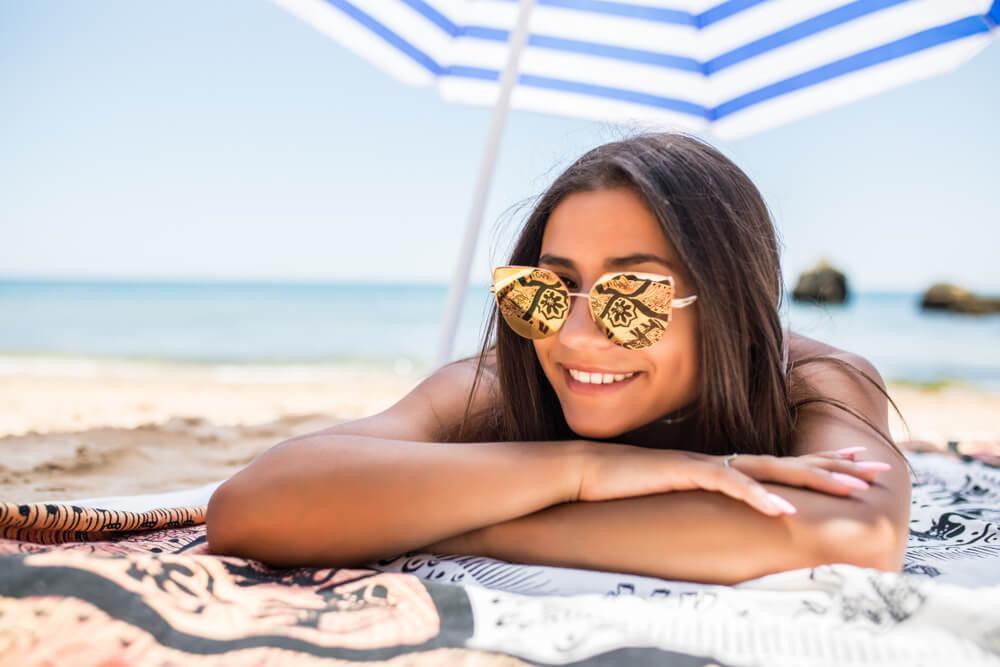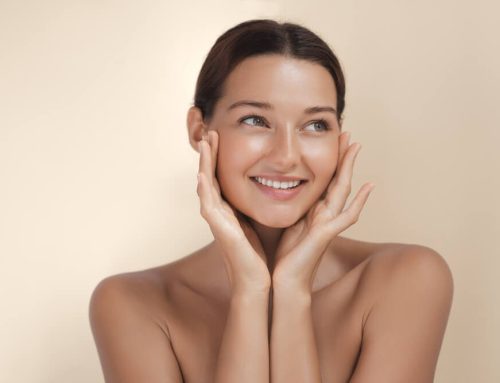We can both agree that spending your time basking in the sun with friends to get a tan is an amazing summer experience. The desire for tanned skin has increased exponentially in recent years especially among young people; apparently, pale skin isn’t desirable at this age. The sun-kissed glow is desired by all from fair-skinned Caucasians to people of color like African Americans and Indians. Tanning also happens to be very addictive.
Without doubt, tanning your skin naturally is much better and easier compared to using foreign and unpredictable skincare routines to improve your tan. Furthermore, these are costly in terms of money and time. So, can you tan your skin safely? Indeed; a safe tan is achieved by activating your body’s skin tanning process without excessive artificial or natural UV light exposure. This is because harmful UV rays can damage your skin cells or change their DNA resulting in skin cancer.
There is a very thin line between giving your skin a good glow and damaging it. This is why you need to do this for the perfect safe tan.
Always Apply Effective Sunscreen
Sunscreen is very important if you are going out to soak in sun rays to achieve golden skin. It helps to protect your skin from UV rays which can cause sunburns, damage your skin tissues or even cause skin cancer. It is recommended that you apply a sunscreen with an SPF that is over 15, especially if you have darker skin. However, as we mentioned earlier this guide is for a safe tan, that is why we recommend using SPF 30 or above. Why? SPF 30 blocks 97% of UVB rays and SPF 50 blocks 98% of the rays, leaving your skin to fight off just 1% of UV rays.
A word of caution: Don’t be fooled by sunscreens with ridiculously high SPF rating such as SPF 75 and more- they don’t necessarily offer you more protection over SPF 30 while tanning. Surprisingly enough, a higher SPF only offers far more UVB than UVA protection, which really can be a false sense of full protection.
Most people under- apply their sunscreen; make no mistake about it. If you under-apply your sunscreen by half, you will be getting only the square root of the sunscreens SPF. For example: If you are using SPF 30, the actually SPF for your skin will be getting SPF 5.47. You should keep reapplying your sunscreen when you are out in the hot sun. This should be done after every two hours or after swimming or sweating.
Apart from SPF, you should check if the sunscreen is broad spectrum. This is because a broad spectrum sunscreen protects you both from UVA and UVB rays. A sunscreen with good broad-spectrum protection should have UVA protection that is 1/3 of its UVB protection. Furthermore, it should be non-comedogenic and hypoallergenic. This ensures that the sunscreen doesn’t clog your pores or irritate your skin.
Always Wear Protective Clothing
If you are aiming for the aesthetics of golden-brown tanned skin, you should consider boosting your skin’s protection with protective clothes too. This is especially if you already got a good tan and don’t want excessive damage to your skin. As a matter of fact, a tan can protect you naturally from further exposure but it is not enough. You will need good clothing because a tan is equivalent to only about SPF 4 sunscreen.
Chances are that you don’t even apply sunscreen to every part of your body. This is one more reason for embracing sun protective clothing as some parts will be hidden or covered by your clothes. That’s not all, another consideration is that your sunscreen may wear off or be washed by water.
You can slip on a long-sleeved shirt if you know you will be out in the sun for a prolonged time. This will to prevent uneven and unintended tanning of your skin. To protect your face from damage, you can carry a hat to put on when there excessive sunlight.
You should also put on some sunglasses to protect your eyes and the skin around it.
UV rays have been found to cause eye problems such as cataracts to old people. Carry an umbrella if you plan on going out in a bikini or shorts in an area with a high UV index. It will come in handy when it gets too hot.
Use Harmless Skin Tanning Products
Good news: Not all skin tanning products will be harmful to your skin. There exist products that don’t cause any irritations and are generally safe. Most of these products contain an ingredient called dihydroxyacetone (DHA). It is a sugar molecule which turns brown upon reaction with amino acids in your skin. The only reaction one can have by using these products is if they are allergic to DHA.
Once you apply a skin tanning product, this ingredient will react with your skin cells (top layer) and create a fake temporary tan. The tan will fade as dead skin cells are removed from the skin which can happen in a couple of days. For a natural-looking tan, you should use a product with a color closer to your skin tone. Topical tanning products include:
- Topical Dyes – These are mostly tanning lotions, sprays, and creams that are diluted with moisturizers and dye products. The dyes are mostly made from vegetable dyes to give your skin a darker color. Notably, the color does not in any way stimulate melanin production. Since the tan is fake, it doesn’t provide any protection against the sun UV rays. As mentioned above, after a few days, the dye fades away with the shedding of dead skin cells.
- Tinted Sunscreens – These are tinted sun protection products like moisturizers, powders, foundation as well as sunscreens. They are more temporary as they easily wash off with water and soap. They do not influence your body’s ability to produce melanin. However, they do offer your skin temporary protection from the sun UV rays. Remember to always wash off your hands with soap after applying them to prevent your hands from turning unnaturally dark.
Shade Yourself from the Sun
When the summer is in full form, you expect lots of sunshine which sometimes will not be very ideal for tanning. This is mostly between 10 am and 4 pm. This is when you should consider taking breaks from the sun and cooling off under a shade or indoors to ensures that your tan is healthy and lasts longer.
Oddly enough, a good shade that protects you from cancer isn’t quite straightforward and easy to recognize as you think. As much as the shade can offer valuable protection from the harmful effects of ultraviolet (UV) rays, not all shades will prove equally protective. You’re probably wondering, how? This is because UVB rays which are considered very harmful can still reach you even when staying under shades such as trees. This happens when light from the sun indirectly bounces off sand or concrete surfaces to you under a shade. Indoors, are the best shades when the sun is scorching hot.
If you are going to use shady trees to protect yourself, avoid those which have sparse coverage – they let through UV rays. You should look for trees which are near buildings or other trees. Also, it is best if you avoid trees near reflective surfaces as they have more indirect UVB rays. All in all, remember even a tree that doesn’t cover all the above points is better than no shade at all.
Considering how scattered UVB rays can reach you in the shade, you can understand why you should still wear your sunscreen even when shading after a sun tanning session.
Improve Your Natural Sunscreen by Eating Healthy Food
Did you know that there are certain fruits, seeds, nuts, and vegetables which can boost your skin’s natural sun protection ability? Eating such foods can be a good way to help you tan safely without worrying about skin damage and skin cancers. The good thing about some of these fruits is that they also help in the skin healing process in case you have sunburns or damaged the skin.
Vegetables such as sweet potatoes, tomatoes, and watermelons contain an antioxidant called lycopene. Similar to an artificial broad spectrum SPF sunscreen, this ingredient helps in the absorption of both UVA and UVB rays. Flavonoids are also antioxidants that help your skin while out in the sun. On top of that, they also offer anti-inflammatory benefits. Foods from which you can get this ingredient include pomegranates, almonds as well as dark chocolate.
Omega-3 fatty acids are also beneficial in boosting your natural sunscreen. They can be found in fish (wild salmon, mackerel, sardines and herring, trout) and seeds such as flax seeds, walnuts, chia seeds, and hemp seeds.
The major antioxidants in most common foods which are easily accessible from fruits and vegetables are called carotenoids. You can easily get these from your grocery store. Carotenoids are found in kales, parsley, leeks, spinach, peas, zucchini, broccoli, and carrots.
Lastly, there are other antioxidant ingredients we can’t leave out; they are called polyphenols. Mostly, they are found in red grapes and green tea. As you head out to bask in the sun you should be enjoying a juice, a fruit or a smoothie made from the above foods.
Avoid Tanning Beds
Solariums, sunlamps, and sunbeds can be as bad as harsh UV rays. In fact, they emit more harmful light than the midday sun in the hot summer months. If you want a safe way to tan, this isn’t one. It doesn’t come as a surprise that the U.S. Department of Health and Human Services, as well as the World Health Organization (WHO), include tanning beds among the top carcinogens. The rays pumped out from these beds mostly contain high amounts of UVA and very little UVB. This is what helps them to make your skin get a tan. You should also note that your body needs UVB for Vitamin D and these beds won’t offer you this.
Any tan from this method does not even increase your skin protection and neither does it give long-lasting benefits. In addition, it can come with several downsides. Harmful effects of artificial tanning include potential damage to your eyes and skin damages like sunburns, redness, swelling, as well as irritations. Patients from tanning beds have also been treated with serious injuries such as burns and loss of consciousness because of the indoor tanning
Other long-term damages include wrinkling, aging, and skin-thickening effects when your skin is exposed to the natural sun.
Because of the associated risks they pose, they have been banned in some countries such as Australia.
Use Spray Tanning Booths
These booths are mostly found in beauty salons and hairdresser shops. Spray guns are used to apply an even coat of fake tan solution on your skin. This is applied to every part of your body, making them controversial as you can accidentally inhale the spray. It is not yet known if the spray is safe if it gets into your mucous membrane. This is why it is advisable to use nose-plugs, shades for eye protection and a wear a lip balm when getting a spray tan.
The temptation to bask in the sun for the reward of a sun-tanned skin is irresistible, and there is nothing wrong with that. Unfortunately, you may pay a hefty price if you do not do it the right way. There are risks associated with both natural and artificial skin tanning; they can both produce excessive amounts of UV light that can turn carcinogenic.
With precaution and proper care of your skin, natural skin tanning can give you a great tan. Alternatively, before you embark on artificial/fake tanning, be sure to weigh the benefits against potential risks of the available options at an individual level because what worked for your BFF may not work for you. Go right ahead and enjoy your hard-earned tan!









Leave A Comment